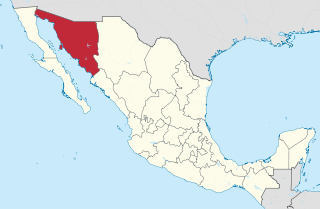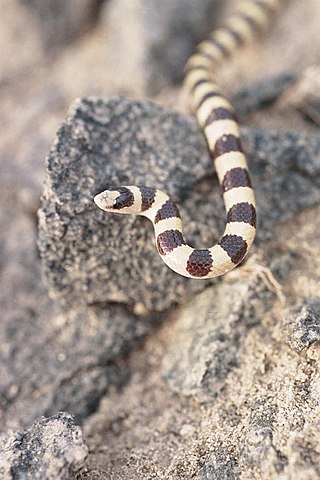
Sonora, officially Estado Libre y Soberano de Sonora, is one of the 31 states which, along with Mexico City, comprise the Federal Entities of Mexico. The state is divided into 72 municipalities; the capital city of which being Hermosillo, located in the center of the state. Other large cities include Ciudad Obregón, Nogales, San Luis Río Colorado, and Navojoa.
Sonora is a state in Mexico.

Saint Geevarghese Mor Gregorios, popularly known as Parumala Thirumeni, was a Metropolitan of the Malankara Church. Parumala Thirumeni became the first person of Indian origin to be canonised as saint. In 1947, the Malankara Orthodox Syrian Church declared Mar Gregorios as a saint, making him the first saint from India canonized by that church. In November 1987, the Syriac Orthodox Church canonized him as a saint.
Ayroor is a village near Thiruvalla, located in the western part of Ranni taluk, in the Pathanamthitta district in Kerala state, India. It is bordered by hills and located near the Western Ghats. Ayroor was previously part of Thiruvalla taluk in Alappuzha district and is considered part of the Edanadu region in Kerala. The Pamba River flows on the southern side of the village.

Sonora is a genus of small harmless colubrid snakes commonly referred to as ground snakes, which are endemic to North America.

Gyalopion is a genus of small nonvenomous colubrid snakes. Species in the genus Gyalopion are commonly referred to as hooknose snakes, and are native to the southwestern United States and Mexico.

Aridoamerica denotes an ecological region spanning Northern Mexico and the Southwestern United States, defined by the presence of the culturally significant staple foodstuff Phaseolus acutifolius, a drought-resistant bean. Its dry, arid climate and geography stand in contrast to the verdant Mesoamerica of present-day central Mexico into Central America to the south and east, and the higher, milder "island" of Oasisamerica to the north. Aridoamerica overlaps with both.

Philipose Mar Chrysostom Mar Thoma XX Valiya Metropolitan, was an Indian prelate who served as Metropolitan of the Malankara Mar Thoma Syrian Church from 1999-2007 and Valiya Thirumeni from 2007 until his death. He was the world's longest serving bishop, serving for −67 years, 11 months and 12 days. He was addressed and referred to as Chrysostom Thirumeni or Valiya Thirumeni after his retirement. He was awarded India's third highest civilian award, the Padma Bhushan, in 2018.

The western ground snake is a species of small, harmless colubrid snake. The species is endemic to North America. Its patterning and coloration can vary widely, even within the same geographic region. Another common name is miter snake referring to the head marking which suggests a bishop's miter; the synonym "episcopus " is a similar allusion.
Ground snake can refer to three distinct genera of snakes:

The Colubrinae are a subfamily of the family Colubridae of snakes. It includes numerous genera, and although taxonomic sources often disagree on the exact number, The Reptile Database lists 717 species in 92 genera as of September 2019. It is the second largest subfamily of colubrids, after Dipsadinae. Many of the most commonly known snakes are members of this subfamily, including rat snakes, king snakes, milk snakes, vine snakes, and indigo snakes.

Sonora palarostris, commonly known as the Sonoran shovelnose snake, is a species of small nonvenomous colubrid which is a native of the Sonoran Desert in North America.

Bacoachi is a small town in Bacoachi Municipality in the north of the Mexican state of Sonora. The area of the municipality is 487 square miles (1,260.65 km²) and the population was 1,456 in 2005, with 924 inhabitants residing in the municipal seat. The elevation of the municipal seat is 4,429 feet above sea level.

Lampropeltis triangulum sinaloae, commonly known as the Sinaloan milk snake, is an egg-laying subspecies of nonvenomous colubrid snake. It is one of the most commonly bred milk snakes in captivity. It is a fairly docile subspecies and will rarely bite. However, if handled, it may discharge a pungent smelling exudate from the cloaca as a warning. The Sinaloan milk snake inhabits the rocky and semi-arid drylands of southwestern Sonora, Sinaloa, and southwestern Chihuahua (Mexico).

Harris's antelope squirrel is a species of rodent in the family Sciuridae. It is found in Arizona and New Mexico in the United States, and in Sonora in Mexico. They are adapted to hot weather conditions including a technique called "heat dumping". They have a wide-ranging diet, including both vegetation, insects, small rodents and carrion.
Hypsiglena unaocularus, commonly known as the Islas Revillagigedo night snake or Clarión night snake, is a species of small colubrid snake endemic to Clarion Island, initially described from a single specimen collected by William Beebe in 1936. During the next several decades, scientists were unable to detect any trace of the snake in their field studies. After an intensive search in 2013, a team of scientist identified 11 snakes that matched the original description of the species. They conducted a series of DNA tests to confirm that the Islas Revillagigedo nightsnake, formerly viewed as the subspecies Hypsiglena torquata unaocularis, is genetically distinct from related mainland snakes and should be recognized as a full species. While never formally declared extinct, this species remained absent from scientific literature due to two main factors: its home on Clarion is extremely remote and only accessible by military escort, significantly restricting the number of biologists who can access this area, and the snake's secretive, nocturnal behavior and dark coloration make it difficult to detect in the field. Because of the lack of follow-up sightings, scientists long presumed that Beebe had provided an incorrect locality for his specimen.

The western shovelnose snake is a species of snake of the family Colubridae.












